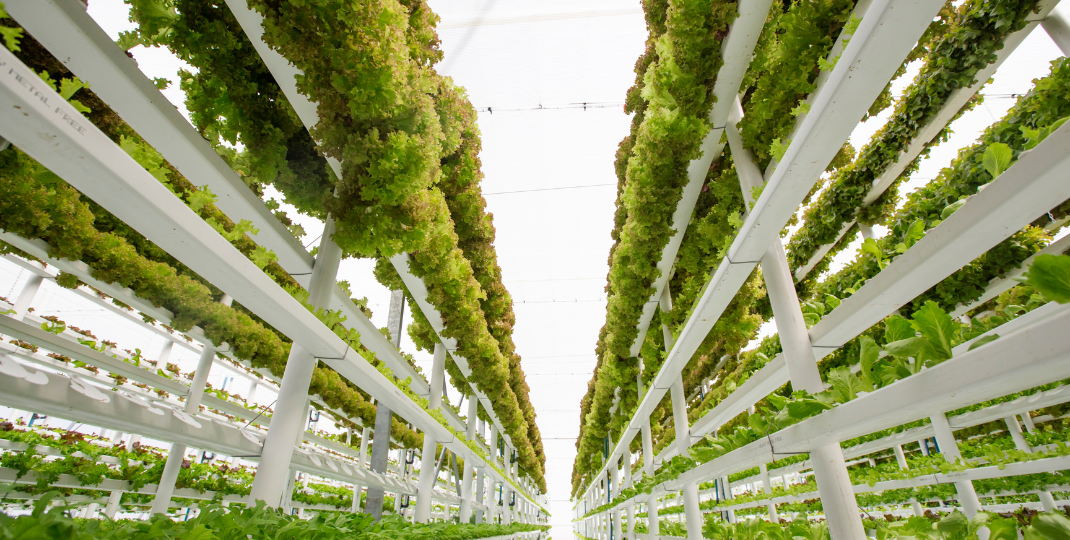Algae has gained significant attention as a promising source of biofuels due to its high lipid content, which can be converted into biodiesel. Compared to other sources of biofuels such as corn and soybeans, algae offers several advantages in terms of efficiency, sustainability, and cost-effectiveness. Algae have a much higher lipid content per acre compared to traditional crops, allowing for greater fuel production in a smaller land footprint. Additionally, algae cultivation does not compete with food production, reducing the environmental impact and potential for food shortages. In terms of sustainability, algae can be grown in a variety of environments, including wastewater treatment facilities and coastal areas, utilizing non-arable land and resources that would otherwise go unused. Finally, while initial investment costs for algae production may be higher than traditional biofuel sources, ongoing research and technological advancements are driving down overall costs and improving the economic viability of algae-based biofuels.
Understanding the Mechanisms of Lipid Production in Algae for Biofuel Generation
Algae have the unique ability to rapidly accumulate high levels of lipids through photosynthesis, converting carbon dioxide into fatty acids that can be used for biofuel production. Unlike other sources such as crops or animal fats, algae can grow in a wide range of environments including wastewater and saline water, making them a more sustainable and efficient option for lipid production. Additionally, algae can be genetically modified to enhance lipid production and optimize growth conditions, further increasing their potential as a renewable source for biofuels.

How does the efficiency of lipid production in algae compare to other sources of biofuels on a per acre basis?
Algae have shown to be one of the most efficient sources of biofuels in terms of lipid production on a per acre basis compared to other sources. Algae can produce up to 10 times more oil per acre than traditional crops like soybeans or corn, and some species of algae can even produce up to 60% of their dry weight as lipids. Additionally, algae can grow in a wide range of environments, including wastewater ponds and saltwater marshes, making them a highly versatile and sustainable option for biofuel production. Overall, the efficiency of lipid production in algae makes them a promising and viable source of biofuels for the future.
What are the sustainability implications of using algae for lipid production compared to other biofuel sources?
Using algae for lipid production has several sustainability implications compared to other biofuel sources. Algae are highly efficient at converting sunlight into energy through photosynthesis, making them a promising renewable resource for biofuel production. They also have a higher lipid content per unit of biomass compared to other plants, such as corn or soybeans, which means they require less land and resources to cultivate. Additionally, algae can be grown in a variety of environments, including wastewater treatment facilities and coastal areas, reducing the competition for arable land with food crops. However, the large-scale cultivation of algae for biofuel production may still face challenges related to water usage, nutrient pollution, and biodiversity impacts, underscoring the importance of sustainable practices and technology innovations in maximizing the environmental benefits of algae-based biofuels.
How do the costs of lipid production in algae compare to other sources of biofuels, including factors such as harvesting, extraction, and processing?
The costs of lipid production in algae generally tend to be lower compared to other sources of biofuels such as corn or soybeans. Algae can be grown in large quantities using minimal land and water resources, making them a more cost-effective option. Additionally, algae have higher lipid content, which means less biomass is needed for extraction. Harvesting, extraction, and processing methods for algae are also more efficient and less labor-intensive, further reducing costs. Overall, the production of lipids from algae offers a more sustainable and economically viable alternative to traditional biofuel sources.
What are the potential environmental impacts of scaling up algae lipid production for biofuels compared to other sources?
Scaling up algae lipid production for biofuels could have potential environmental impacts such as increased water and land use, nutrient pollution in surrounding water bodies, and potential disruption of local ecosystems. Algae cultivation requires large amounts of water for growth and processing, which could strain local water resources. Additionally, the fertilizers needed to promote algae growth can lead to nutrient runoff and eutrophication in nearby water bodies. Furthermore, clearing land for algae cultivation could contribute to deforestation and loss of biodiversity. Compared to other sources of biofuels, such as corn or sugarcane, algae production may have a smaller land footprint but still poses challenges in terms of sustainability and environmental impact.

How do the energy inputs required for algae lipid production compare to other biofuel production methods?
The energy inputs required for algae lipid production are generally lower compared to other biofuel production methods, such as corn or soybean-based biodiesel. Algae can grow rapidly and efficiently in a variety of water sources, requiring minimal land and resources to cultivate. Additionally, algae can be grown in non-arable land and do not compete with food crops for resources. This makes algae lipid production a more sustainable and potentially cost-effective option for biofuel production.
What are the challenges and limitations facing algae lipid production in terms of scalability and commercialization compared to other sources of biofuels?
Algae lipid production faces challenges and limitations in scalability and commercialization compared to other sources of biofuels due to factors such as high production costs, limited infrastructure, and technical issues in growing algae at large scales. Algae cultivation requires significant inputs of water, nutrients, and energy, making it more expensive than other biofuel sources like corn or soy. Additionally, scaling up algae production poses difficulties in maintaining consistent quality and yields, as well as challenges in harvesting and extracting lipids efficiently. Furthermore, the lack of established markets and regulatory frameworks for algae-based biofuels hinders their widespread commercialization and adoption in the global energy market.
How do government policies and incentives for biofuel production impact the competitiveness of algae lipid production compared to other sources?
Government policies and incentives play a significant role in shaping the competitiveness of algae lipid production compared to other sources of biofuel. By providing financial support, tax credits, and subsidies for algae lipid production, governments can make it more economically viable for companies to invest in this technology. Additionally, regulations mandating the use of biofuels or setting renewable fuel standards can create a higher demand for algae lipid-based biofuels, further increasing their competitiveness. These policies can also drive innovation and research in algae lipid production, leading to improvements in efficiency and cost-effectiveness. Ultimately, government support can help level the playing field and make algae lipid production more competitive with traditional sources of biofuel.
Lipid production in algae: A comparison of efficiency, sustainability, and cost-effectiveness with other sources of biofuels
In conclusion, lipid production in algae stands out as a promising alternative source of biofuels due to its high efficiency, sustainability, and cost-effectiveness. Algae have the potential to produce a greater amount of lipids compared to other sources such as corn or sugarcane, making them a more efficient option for biofuel production. Additionally, algae can be grown in various environments, including wastewater treatment plants, reducing the competition for arable land and water resources. Furthermore, the production of algae-based biofuels can be economically viable, especially with advancements in technology and scaling up production. Overall, lipid production in algae offers a sustainable and environmentally friendly solution to our energy needs.
